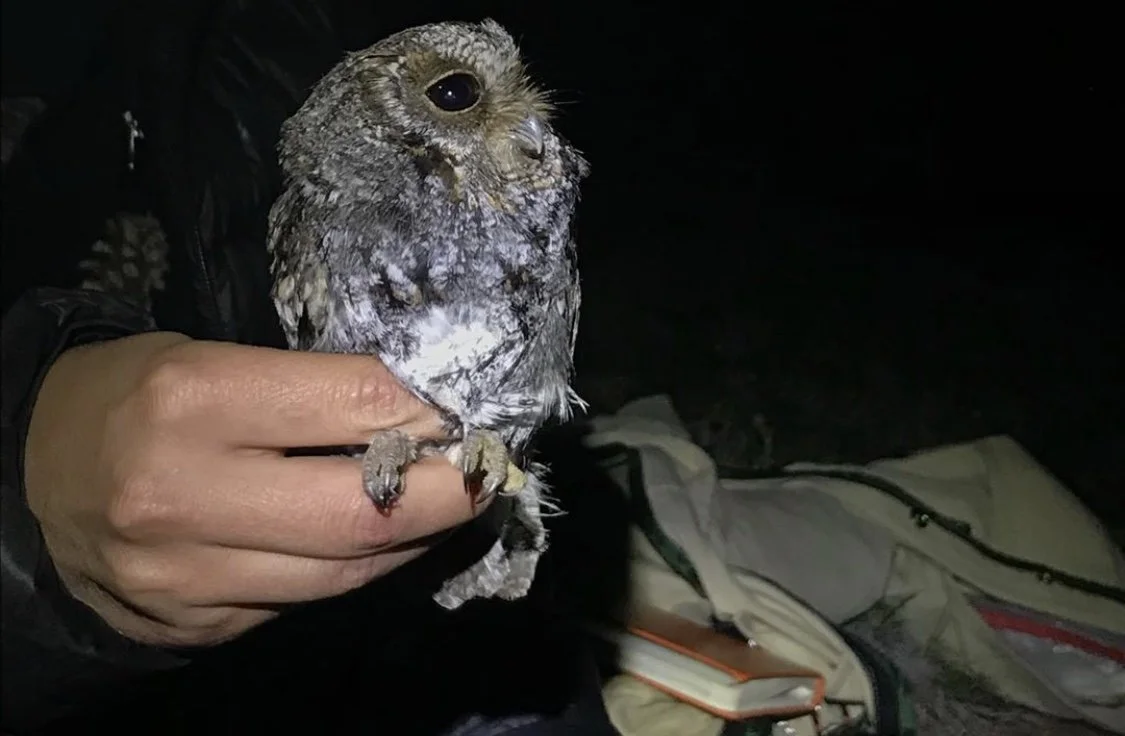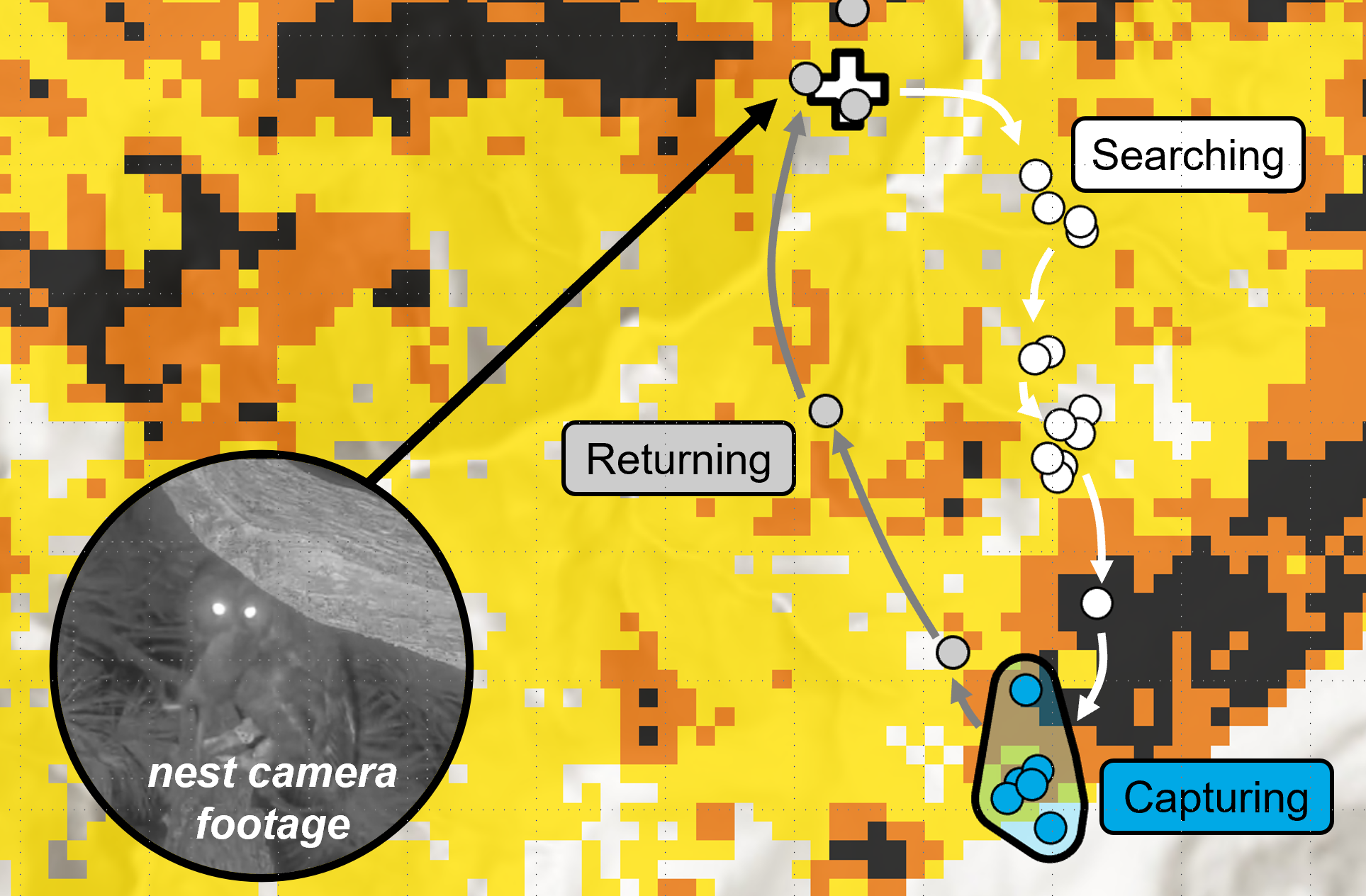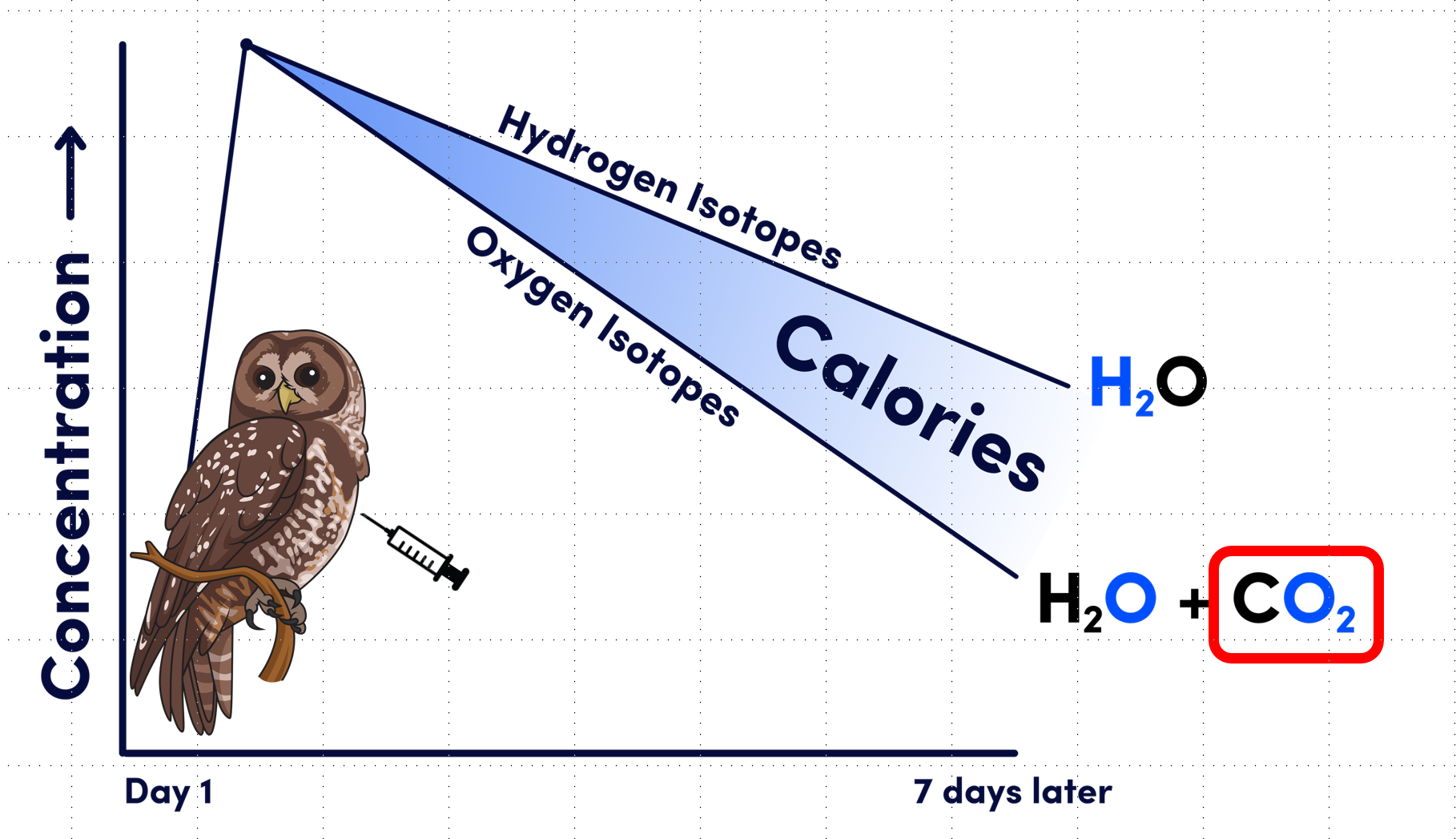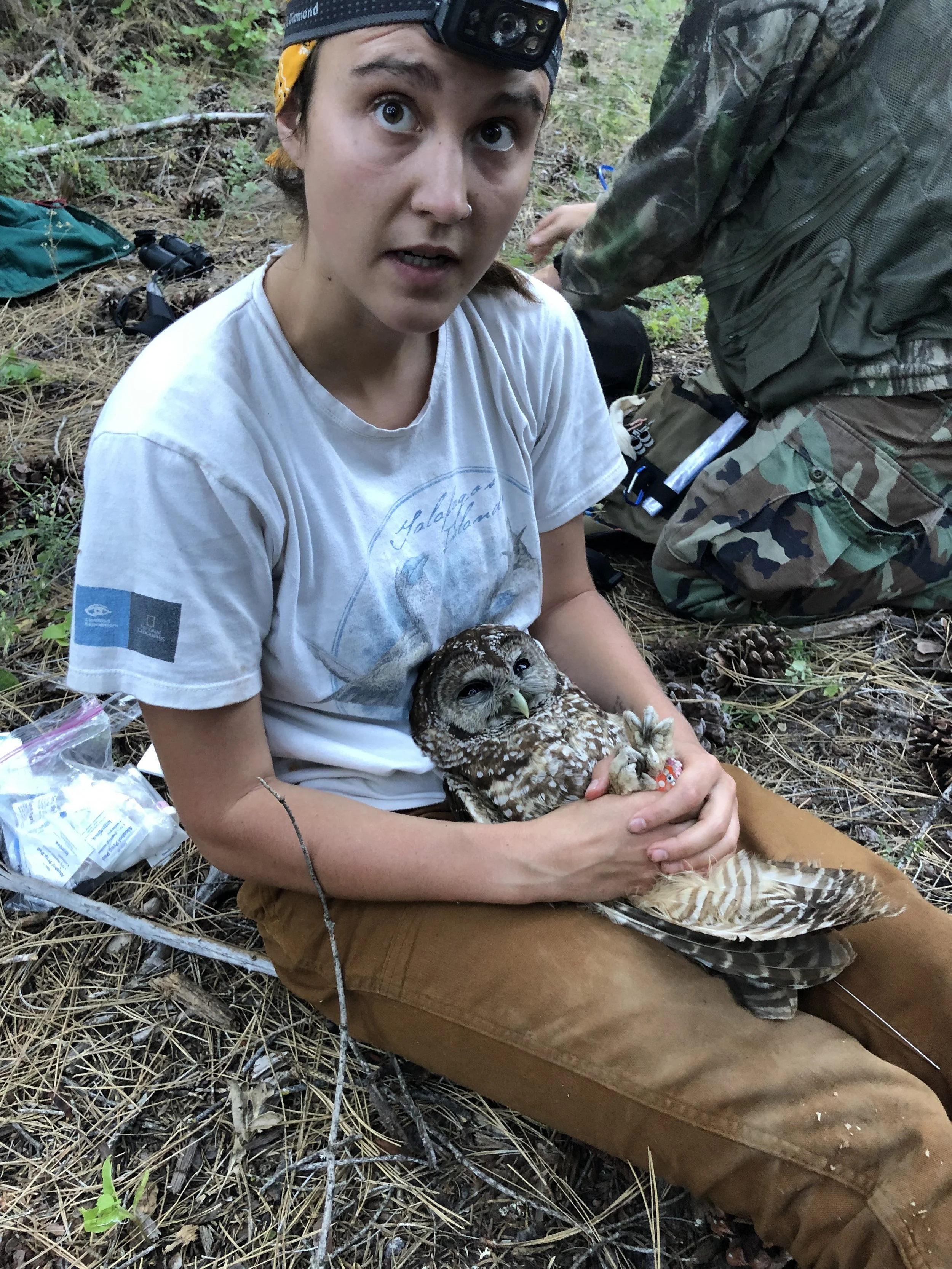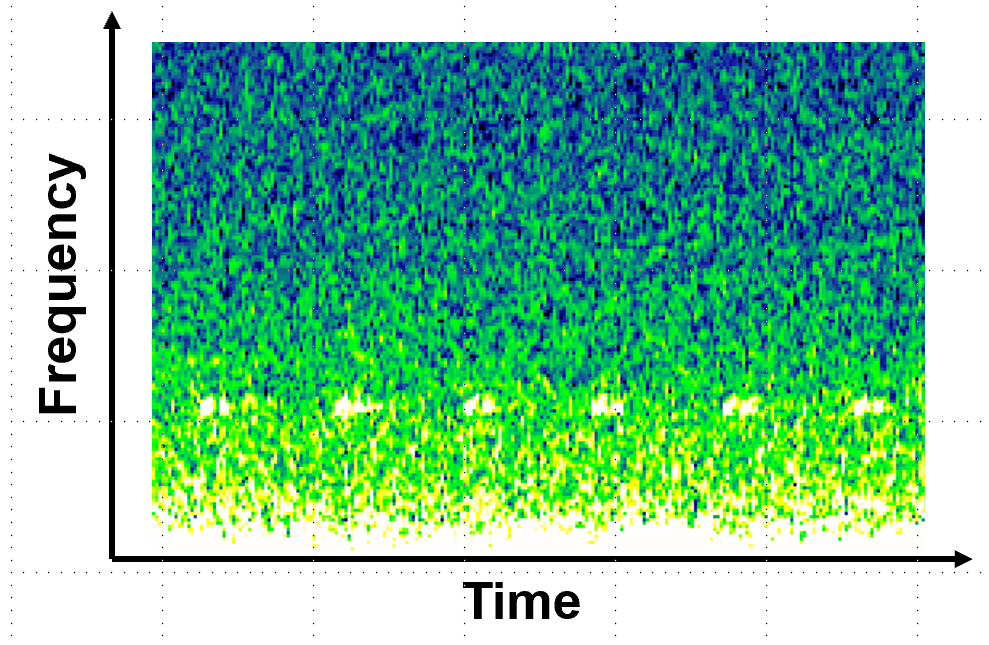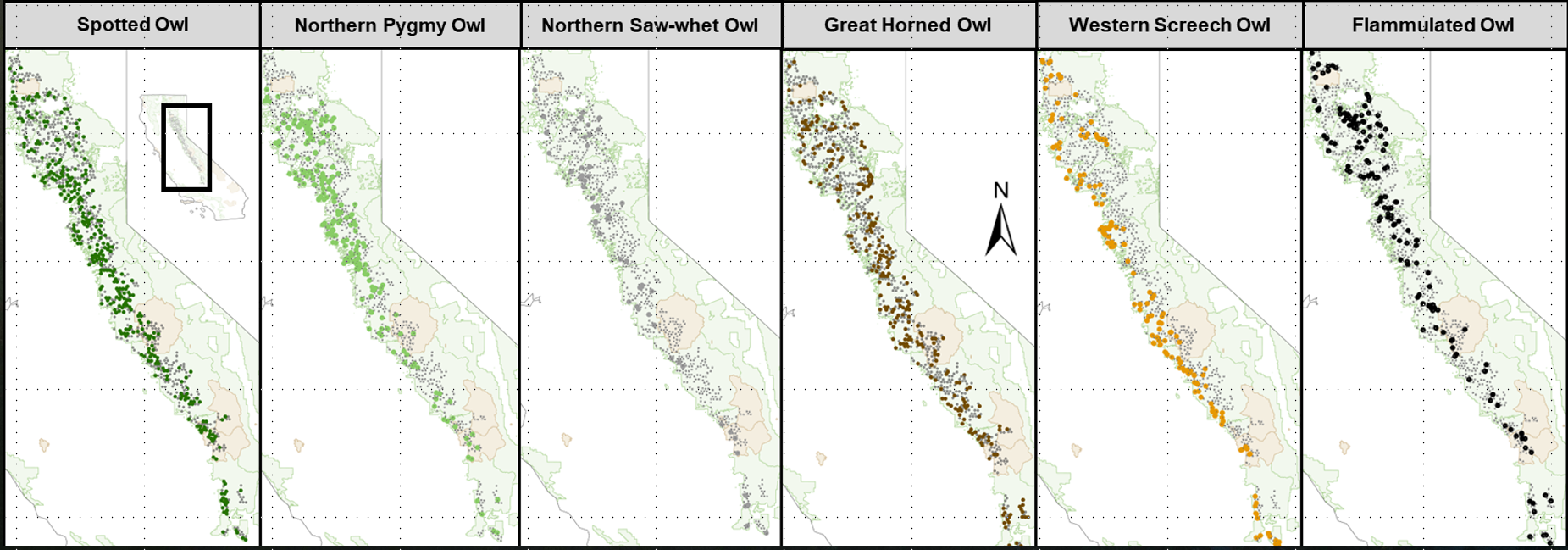GPS Tracking
We can learn a lot about animals by tracking their movement. We can do this by capturing and attaching GPS tracking devices to a small percentage of individuals in wild populations. A home range encompasses all of the space an animal uses. For conservationists, it is important to understand how animals use space—where animals occur indicates which resources they need to survive and reproduce! Putting GPS tracking devices on animals allows us to predict the boundaries of their home range.
Flammulated owls have very small home ranges compared to other raptor species! This is because of their small body sizes (50 to 65 grams) and their largely insectivorous diet; in order to provide enough food to growing offspring, they must return to their nests frequently because the energy individual prey items provide is so small. Flammulated owl movement is more constrained around their nests early at night when insects are most active.
Spotted owls are much larger than flammulated owls, so they require more food to survive. This means their home ranges are much larger. Because spotted owls are larger than flammulated owls, we can attach larger GPS units to them. We can often obtain more data using larger GPS units. By programming GPS tracking devices to record more locations over a shorter period of time, we can get clear movement paths to and from nests. This helps us predict exactly where individuals catch their prey! By combining these fine-scale GPS locations and simultaneous nest camera monitoring, we can understand exactly what habitat spotted owls need for foraging and what exactly they are foraging for!
Energetics
Animals must spend energy to obtain energy! This is one of the fundamental rules of animal ecology. There are a lot of different ways to measure how much energy animals spend. In a laboratory setting, scientists can measure oxygen consumption by calculating VO2 max. However, most animals do not exist in a laboratory setting! They live and move and spend energy in real ecosystems!
We can calculate a field metabolic rate using a technique called “doubly labeled water.” This involves capturing free ranging animals and injecting them with saline and a very specific concentration of deuterium and oxygen-18, which are heavy isotopes of hydrogen and oxygen. Animals are released and are free to move about their ecosystem as normally as possible. After a few days, individuals are recaptured and a blood sample is obtained. In the lab, we take all of the water out of the blood and measure the remaining concentration of oxygen and hydrogen isotopes. The difference in the rate of hydrogen elimination and oxygen elimination is equivalent to the rate of carbon dioxide elimination—which we can use to estimate the amount of energy an individual spent while moving around its wild system!
We have used this method to measure the energetic expenditure of free-ranging spotted owls during heat waves. We found that spotted owls can avoid potential heat stress by moving less and finding cool, shady roosting spots in big trees. However, when temperatures exceed the limit of what this species can tolerate, there are significant consequences for both the physiology of individuals and entire populations.
Bioacoustics
Many animals make sound! We can learn a lot about wild animals by recording the sounds they make and trying to understand where, how, and why the make those sounds.
Owls are notoriously cryptic, which makes them very difficult to find and study. I have spent many hours trudging around the woods at night looking (and listening) for the nocturnal raptors! However, one of the traits of owls most people know (“Hoot hoot” anyone?) is something we can take advantage of! Owls are highly territorial, and they defend their territories with vocalizations! We are learning more about where these cryptic animals occur using these calls!
We deploy thousands of autonomous recording units (ARUs) throughout entire regions to listen to the forest at its darkest hours. This allows us to study larger parts of species’ ranges and understand how big events like forest fires and droughts impact impact not only a subset of individuals but entire populations!
We visualize sound data using spectograms—this spectogram shows a flammulated owl territorial call, which are the series of yellow pixels indicating higher intensity at specific frequencies. The first documentation of flammulated owl calls (published in the early 1900s) described them as high, single pitch “poop poop” calls (no, I am not kidding)! We know exactly where and when this particular flammulated owl was calling. We can use occupancy modeling to predict 1) where individuals are calling and 2) where individuals are likely not calling.
We can combine all of the acoustic data from thousands of ARUs deployed across a region to start to understand how, for example, wildfires impact flammulated owls (as well as any other species that vocalizes). Below are locations where different owl species were detected across the Sierra Nevada!
